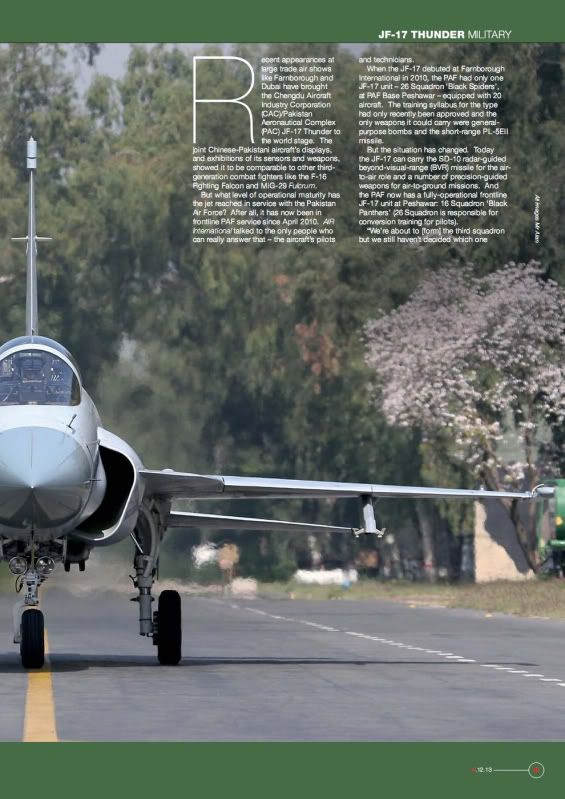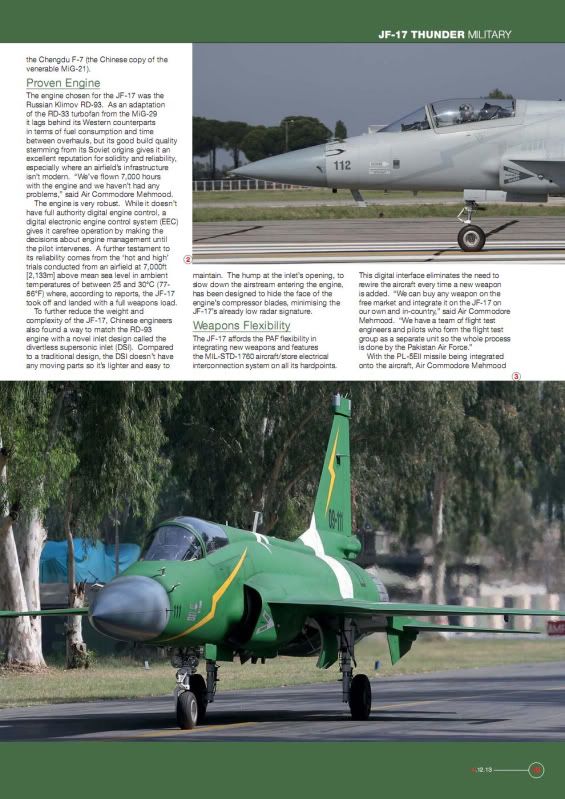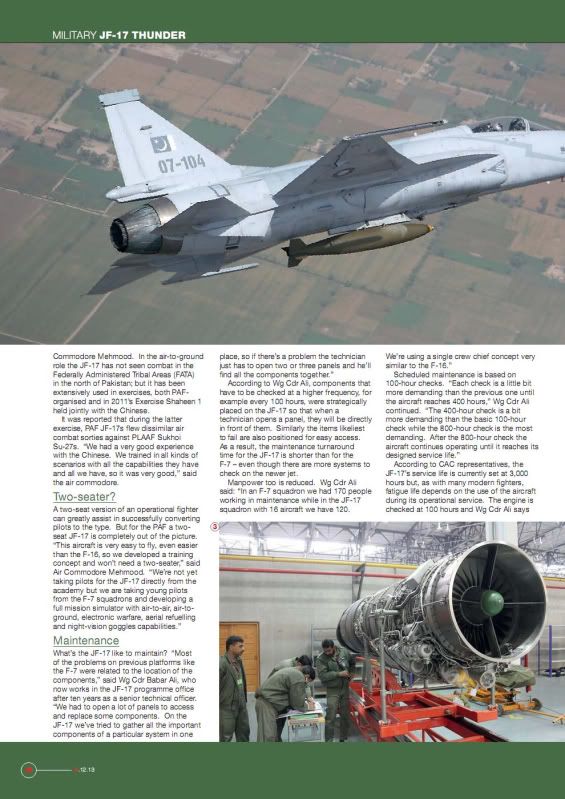You are using an out of date browser. It may not display this or other websites correctly.
You should upgrade or use an alternative browser.
You should upgrade or use an alternative browser.
JF-17/FC-1 Fighter Aircraft thread
- Thread starter johnqh
- Start date
Miragedriver
Brigadier
I should have also included that the aircraft would have the appropriate avionics and ECM instrumentation comparable to the FC-1. With that in mind the aircraft is more of a 4+ generation aircraft that the FC-1. Yes it is small, but then so is the Gripen (smaller than the Mig-21) and the Gripen is a very capable aircraft.
Given similar or better avionics, more maneuverable and more flight hours. Why not consider it. Granted the useful load to range many be less. However are you really going to hang stuff on the aircraft like a Christmas tree or use it in a specific strike or intercept roll?
Given similar or better avionics, more maneuverable and more flight hours. Why not consider it. Granted the useful load to range many be less. However are you really going to hang stuff on the aircraft like a Christmas tree or use it in a specific strike or intercept roll?
Miragedriver
Brigadier
I suspect that modifying JL-15 to give 4+ avionics would drastically ramp up the cost, and increase weight drastically, reducing range, payload and endurance further.
Very true the cost would go up along with the weight. But as mentioned previously the thrust is comparable and the airframe has a potential longer life.
I suspect that modifying JL-15 to give 4+ avionics would drastically ramp up the cost, and increase weight drastically, reducing range, payload and endurance further.
But JL-15 is already in form of twin seat thus eliminating the new for advance simulator or the need to purchase additional trainer. Rookie pilot intergfation will be faster and shorter. Therefore save cost and time compare to other peer jet.
Last edited:
An area of particular concern to potential sales of the JF-17 is China's weakness in purchase and resale of aircraft engines. This could complicate a purchase decision for potential customers. The K-8, for example, is powered by the Ivchenko AI-25 turbofan or the Honeywell TFE731, a powerplant originally developed by Garrett for business jets, while the JF-17 is powered by Russia's Klimov RD-93. Historically, a major criticism of Russian aviation equipment is the lack of spares and delays in conducting major repairs. The Royal Malaysian Air Force logistics officer told Flightglobal in an interview at the at 2011's LIMA air show in Langkawi that “….it could take one year for a MiG-29 engine to be repaired if were sent back to Russia”, adding: "The MiG-29 are a maintenance nightmare." That alone should be enough to make potential JF-17 customers have second thoughts.
"In a worst-case scenario, customers must worry not only about maintaining good relations with China, but also with Russia. This substantially reduces China's independent leverage in the lucrative and strategically potent area of military aircraft sales, which Russians, Europeans and Americans are loath to cede to China. China will find it particularly challenging to make headway in Russia's former Soviet republics, with Moscow using its political clout in the region to ensure sales for Russian airframes.
However the one bright point in all of this is that the cost of effective combat aircraft has gotten prohibitively expensive. Many 3rd world or developing nation Air Forces are faced with a choice between fewer or no military aircraft second hand aircraft and/or Chinese versions, growing numbers of countries in Africa, the Middle East and Latin America are likely to consider the China option
Maybe Beijing willing offer creative financing and other support packages that other established aircraft producers may not offer.
JL-8 has domestic engine as WS-11. Same as JL-15. Localisation of al-225 Ukraine engine is underway and Ukraine are very reliable partner.
Miragedriver
Brigadier
JL-8 has domestic engine as WS-11. Same as JL-15. Localisation of al-225 Ukraine engine is underway and Ukraine are very reliable partner.
True the J-7, JL-9, FTC-2000 and the J-8 have a long built and reliable power plant. The L-15 has the reliable Ukrainian source.
My concern is the JF-17 and the RD-93 engine
asif iqbal
Banned Idiot
New update on the Thunder especially interesting is the maintance section and how good it is for PAF
Air International
December 2013; Vol. 85 No. 6
Pages: 40—47
If you are unable to read you can read here on PDF my uploads lost resolution!!








Air International
December 2013; Vol. 85 No. 6
Pages: 40—47
If you are unable to read you can read here on PDF my uploads lost resolution!!








Last edited:
New update on the Thunder especially interesting is the maintance section and how good it is for PAF
Air International
December 2013; Vol. 85 No. 6
Pages: 40—47[/IMG]
[I
Good read...
I would like to point out that
having pitch fbw while the other 2 mechanical probablly didn't save them as much money as they thought.
thats probablly why they would go for all in later versions. its typical that someone who does it for 1st time think that cost is scale-able. which is not.
airframe could also be much more lightened if the other two were carefully designed fbw.
anyways just 2 penny from a someone wh
asif iqbal
Banned Idiot
Another interesting point which I knew from before is that the JF-17 can datalink to Link-16 albeit via a ground station
This means Erieyes can direct JF-17 to the fight scene if required but I would guess ZDK-03 is good for that purpose too
Last edited:
